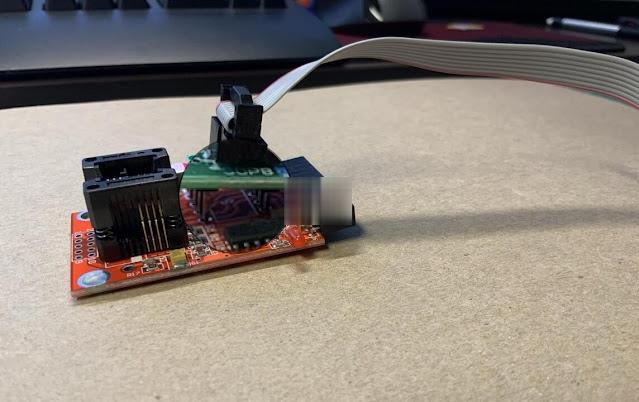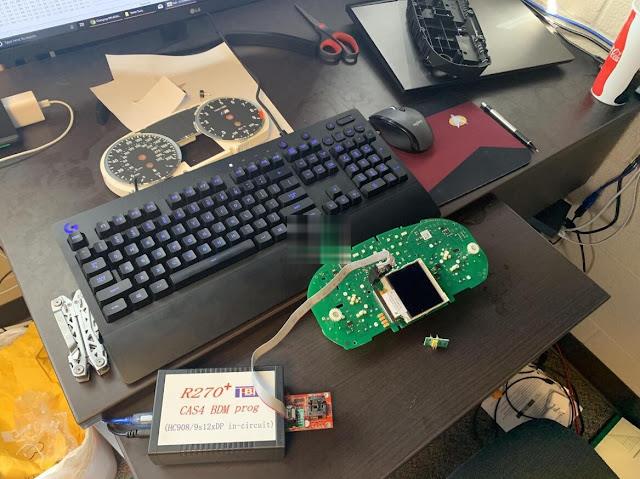
This is a DIY guide that explains how to retrofit another instrument cluster in your car. In this case I upgraded my 128i to an M3 cluster, but all coding processes apply to upgrading other 1’s clusters (e.g. 135i clusters in a 128i).
Important notes: I am using Windows 10 Home 64-bit on a Lenovo Legion gaming laptop. Nothing special about computers here. A laptop is preferable as you will need to do some in-car coding. The donor instrument cluster MUST have fewer miles than your car to use this process. I bought an instrument cluster from a manual M3 and put it in a manual 128i. Please do not ask how to install in an automatic, because I have no idea. I would assume the process is similar (it’s probably exactly the same since NCS Expert really does all of the footwork for you). I have used all of the software below and have had success. It is reasonable to assume that it will work for you too. When it doesn’t, Google is a wonderful tool that fixes issues for a lot of people (myself included). You should have a basic understanding of NCS Expert and how it works.
Materials for Coding the New-to-You Cluster:
-R270+ Programmer (like this one)
-SOIC8 Testing Clip (like this one)
-Used Instrument Cluster (This process requires that it has less miles than your car; easy for me, with 196k miles when shopping for M3 parts)
-T10 Torx screwdriver (only necessary for M3 clusters)
-Install R270 Programmer Software (this download is clean, I wouldn’t recommend using the disc included with the programmer, RUN SETUP.EXE to install)
-Install HxD hex editor (here)
-Mike’s Easy BMW Tools (this is what works for me)
-K-DCAN Cable (this one works for me)
Preparing for Coding:
Make sure that the required software has been installed and that the programs start correctly. Test the BMW Tools by starting INPA and checking that it is connected. First you need to open your new instrument cluster. The M3 clusters have four silver T10 screws on the back that you need to loosen before attempting to take this thing apart. After these screws are pulled out, working your way around the cluster, open each of the 6 holders (2 on top, 2 on the bottom, 1 on each side) and slowly pull the two halves apart. Now you need to pull off the gauge needles. To do this, I recommend cutting out a four inch square piece of paper and then cutting a ~ 2 mm wide slot about 2 inches long, starting in the center on one of the sides and going to the center of the paper square. Now fit this square of paper under the needles and over the measuring wheel. The slot is designed to allow you to slide the sheet of paper under both needles (speedometer and fuel or speedometer and oil temperature) and around their pins to protect the dial (they scratch easily). To remove the needles, I recommend a very thin fork that will fit around the pins. Just work it under the needles and carefully pry it up. Shoot for as vertical a movement as possible with as little twist as possible. If you break the pins that hold the needles in place, you’ll practically scrap that cluster. In a pinch, a thin, flat screwdriver works well. Set the needles aside in a safe place after you’ve played with them (we all do).
This is difficult to explain, but here it is: you now need to flip the cluster over onto the black plastic side. You will see a rectangular 18-pin connector (it’s the only connector, but I’ll try to be detailed). You’ll need to push this connector down (toward the bottom of the cluster assembly), push it out so that the white plastic piece pops out a little, then push in the opposite direction on the side that doesn’t pop out and wiggle somehow dealt with the matter. The end result is a large piece of black plastic and then the white plastic part with the back of the board now exposed. Now separate the white plastic from the circuit by loosening four small clips (2 above, 2 below). For 1-series clusters, you must also remove the ribbon cable attached to the LCD panel. Just unplug it from the long white connector at the bottom of the board. Now you can clearly see the brains that make your instrument cluster work, a lot more is happening than you think, far from old cars (which makes our job super easy). You are now ready for the first part of the coding.
Clearing Old VIN from EEPROM:
Pull out your R270+ and your SOIC8 test clip. Find your EEPROM. It is an 8-pin chip (four on a side). On the M3 cluster, it is just above the left corner of the LCD display (as shown in the huge picture below). The clip I used (link above), has a pink wire denoting Pin 8. If you look at the text on the EEPROM, correct side up, Pin 8 is on the bottom left of the chip.
Ensure everything is plugged-in and connected. Launch the R270 programmer application, select which chip it is (printed on EEPROM). All three clusters I’ve seen had 080D0WQ chips, but verify yours because they can be different. Hit “Read” ignore the obnoxious beeps from the programmer box, and save the .BIN file to your desktop (you can save it anywhere, really). Now, close the R270 program, and open HxD. Open the .BIN file. Scroll down to the -2E0 line, and highlight all data in that line, and replace it with FF’s. Line -2E0 should read “FF FF FF FF FF FF FF FF FF FF FF FF FF FF FF FF” when done (you could copy that and paste it into HxD, too). Save the .BIN file, close HxD, and open the R270 app again. Load the .BIN file, then verify the selected chip, and hit write. This process will take about a minute, and there will be lots of beeping.
The programmer comes with just the red board. The clip comes with two adapters, I used the black one with the keyed connector for the clip itself and simply inserted it into the pin holes next to the ZIF socket. (Pic attached)
Once finished, you are done with this part of the install. Disconnect the programmer, and, minus the needles and front cover (part with clear plastic), reassemble the cluster. You should ONLY have the back black plastic part, circuit board, and white plastic part put together.
Coding Cluster to Car with NCS Expert:
After you’re done being extremely happy that you did a computer thing, go out to your car with your half-cluster and your needles.I would disconnect the negative battery lead for this part.Remove your original cluster, there are two torx (T15??) screws at the top of the hood. Remove those, then use a thin flat-blade screwdriver to push the top of the cluster downwards, then pull the cluster out. Undo the connector on the back (there’s a latch mechanism, so be aware of that).Now, connect your new-to-you cluster, and THEN reconnect the battery, if you disconnected it.Open your computer, turn the ignition on (door closed, engine not running, climate control unit should turn on). Connect your K-DCAN cable and verify communication with INPA. Open NCS Expert, load “Default profile” (Mike’s Tools). Hit “VIN/ZCS/FA” then hit “ZCS/FZ f. ECU” and select “E89” for chassis, then “CAS” for module. Give it a second to fill VIN and VO shipped shipped back to hit “Process ECU” and attempts to hit ok. “Change job” and attempts to the it acceptable to will take a couple seconds and there will be beeping and weird noises. Once done, your new cluster is coded to your car’s VIN, and will not show any errors for things your car doesn’t have.loading..
If you want to know more about bmw diagnositc tools, please click bmw trouble repair.



Leave a Reply